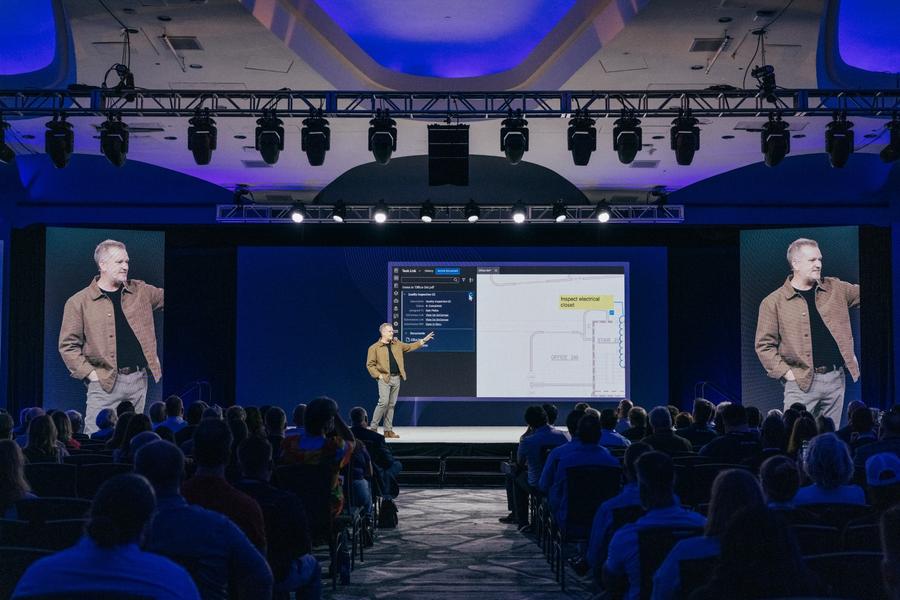The UK government is set to launch its most ambitious infrastructure investment in more than 50 years, approving up to 150 major projects, including gigafactories, solar farms, roads and railways. These initiatives promise job creation and economic growth. But delivering them efficiently within tight budgets and resource constraints presents a significant challenge.
That’s where construction software comes in. Digital tools are reshaping how infrastructure projects are planned, executed and delivered. By improving efficiency, tightening cost control and enhancing collaboration across supply chains, the right technology can make the difference between success and costly overruns.
Here are 10 essential tips for leveraging construction software to maximize the success of infrastructure projects.
1. Establish Digital Workflows Early
A well-defined digital workflow is the foundation of an efficient project. Establish clear protocols for data storage, access and sharing at the procurement stage to prevent miscommunication and inefficiencies. Align workflows with measurable keyperformance indicators (KPIs) for transparency and accountability, and standardize processes to streamline approvals and prevent delays.
2. Centralize Teams and Documentation
Fragmented communication increases project risks. A common data environment (CDE)ensures all stakeholders work from a single source of truth. Tools likeBluebeam and Autodesk Construction Cloudenable real-time collaboration, allowing teams to review and update documents simultaneously. Early identification of potential issues prevents costly rework and schedule disruptions.
3. Ensure Full Team Access to Software
Infrastructure projects involve multiple stakeholders—from contractors to engineers. Ensuring universal access to up-to-date project data improves coordination and prevents bottlenecks. Cloud-enabled platforms ensure everyone works from the latest version of project plans, preventing costly miscommunications. Role-based permissions enhance data security while maintaining accessibility.
4. Use Project Management Software for Complex Coordination
Infrastructure projects involve thousands of interdependent activities. Advanced project management software simplifies task sequencing and optimizes resource allocation. Gantt charts and AI-driven scheduling improve visibility across timelines and dependencies. Real-time dashboards enable quick identification of delays and bottlenecks.
5. Foster Seamless Supply Chain Collaboration
Disconnected supply chains lead to inefficiencies. Standardizing digital tools across all vendors minimizes disruptions. Use open file formats and interoperable software to prevent compatibility issues. Cloud-based procurement systems enhance material tracking and prevent shortages.
6. Embrace Cloud-Based Construction Software
Real-time project visibility reduces downtime and prevents errors. Cloud-based solutions provide on-demand access to latest plan documents, schedules and site reports. Live data access helps teams detect and resolve issues before they escalate. Remote collaboration ensures off-site stakeholders remain aligned with on-site activities.
7. Leverage Mobile Devices for On-Site Inspections
Mobile devices streamline inspections, reporting and compliance tracking directly from the construction site. Augmented reality (AR) tools overlay digital models onto real-world conditions for real-time verification. Mobile reporting apps ensure faster issue resolution and automatic synchronization with project databases.
8. Prioritize Health and Safety with Digital Tools
Ensuring worker safety is paramount. Digital solutions enhance safety compliance, reduce risks and speed up incident reporting. AI-driven monitoring tools trackworker fatigue, hazardous conditions and site compliance. Automated safety checklists ensure regulatory compliance before work begins.
9. Build a Digital Project Database
Every infrastructure project generates valuable insights. A project information model (PIM) creates a digital blueprint that enhances future decision-making. Use historical data to improve bidding accuracy and resource planning for upcoming projects. Digital twin technology helps in asset management by providing a real-time replica of infrastructure systems.
10. Explore AI-Powered Insights for Risk Reduction
Artificial intelligence (AI) is revolutionizing construction planning. AI-driven analytics can forecast risks, optimize scheduling and enhance cost control. AI algorithms analyze project data to predict potential delays before they happen. Machine learning modelscompare completed work with design specifications, preventing costly errors.
Quick Tips: 5 Tech Upgrades Every Construction Firm Should Implement Today
To remain competitive, firms must modernize their technology stack. Here are five must-have solutions:
- Cloud Collaboration Tools: Ensure seamless real-time document sharing and communication.
- Advanced Project Management Software: Optimize scheduling, resource allocation and risk tracking.
- Mobile Inspection Apps: Conduct inspections and generate progress reports on-site for faster approvals.
- Digital Document Management: Eliminate paper-based processes for better version control and compliance tracking.
- AI-Driven Analytics: Use data insights to forecast risks and prevent costly overruns.
Firms that invest in these technologies today will stay ahead of the curve, ensuring project success and long-term growth.
Optimize Your Infrastructure Projects with Digital Solutions
Digital construction software is no longer a luxury—it’s a necessity. As infrastructure projects grow in scale and complexity, the right digital tools can ensure projects are completed on time, within budget and to the highest standards.











